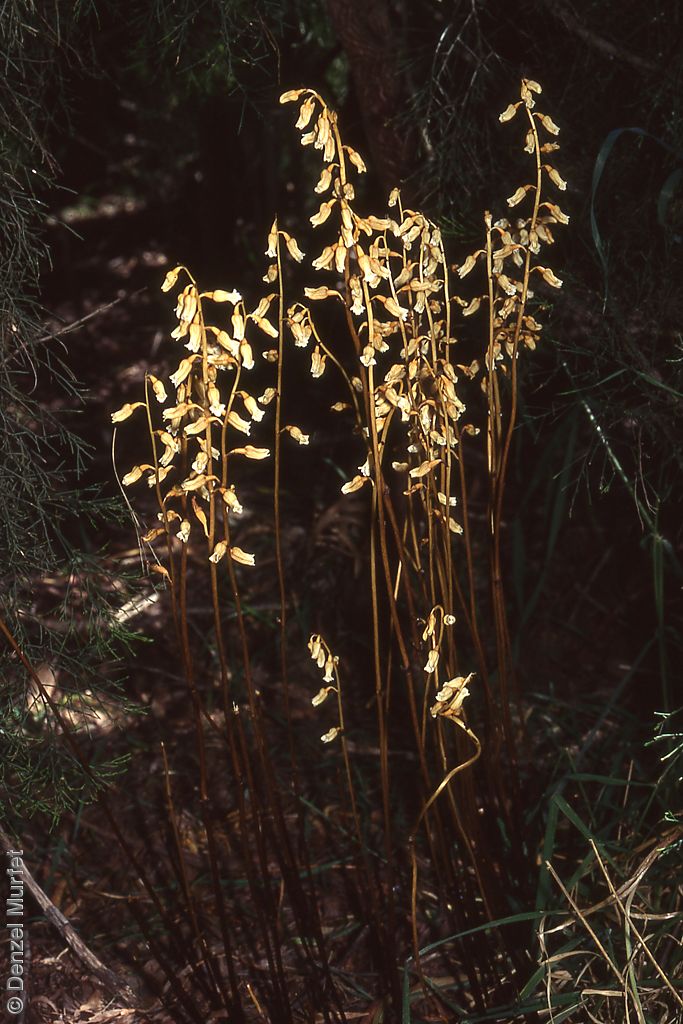
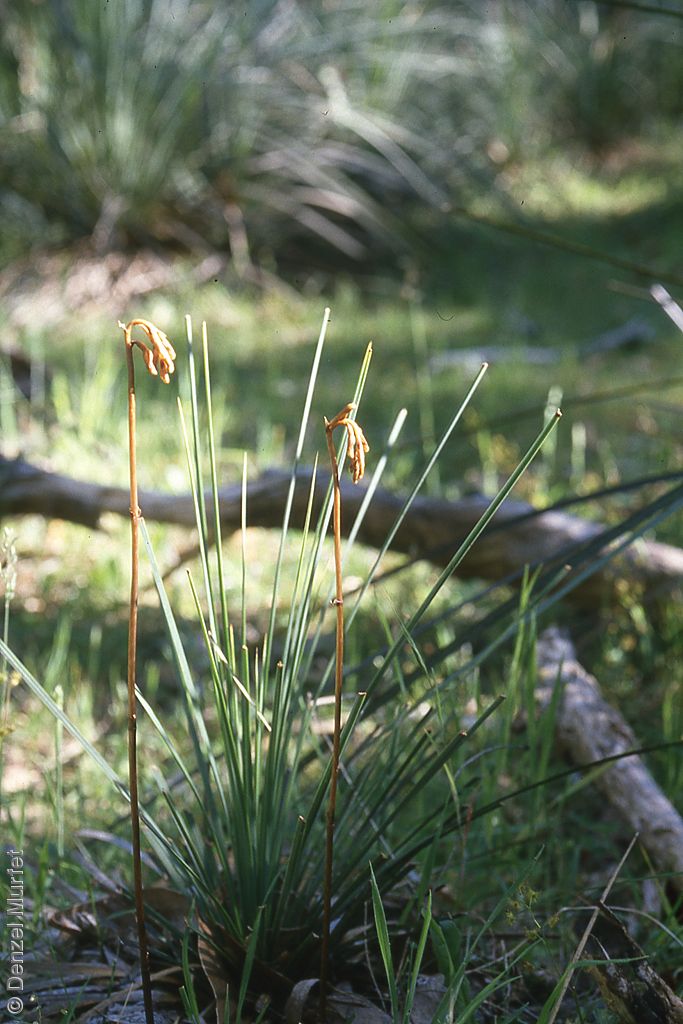
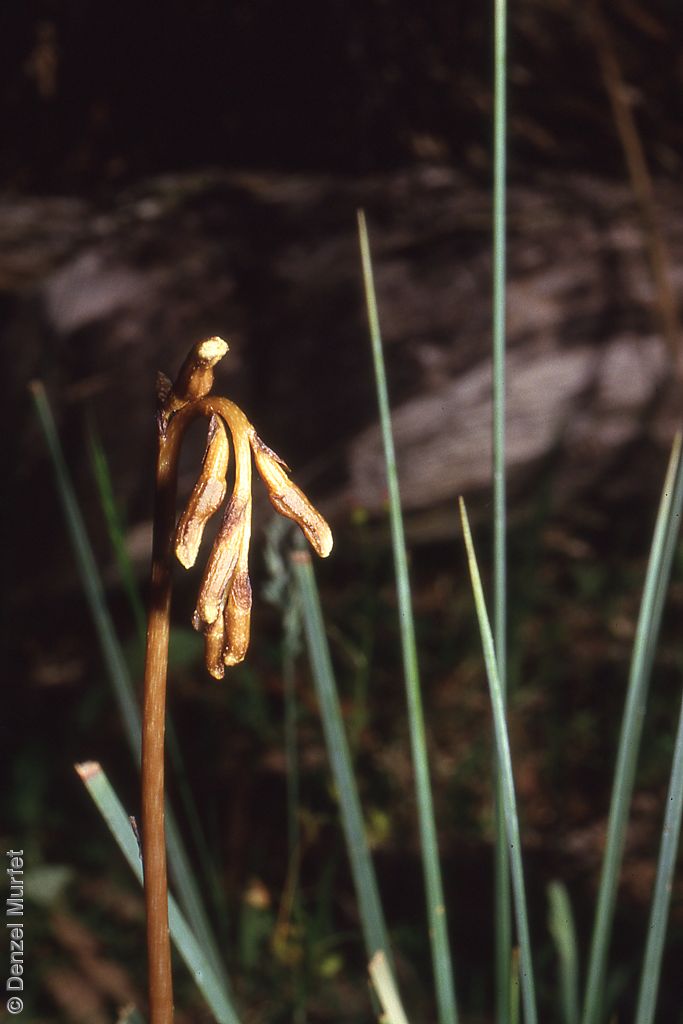
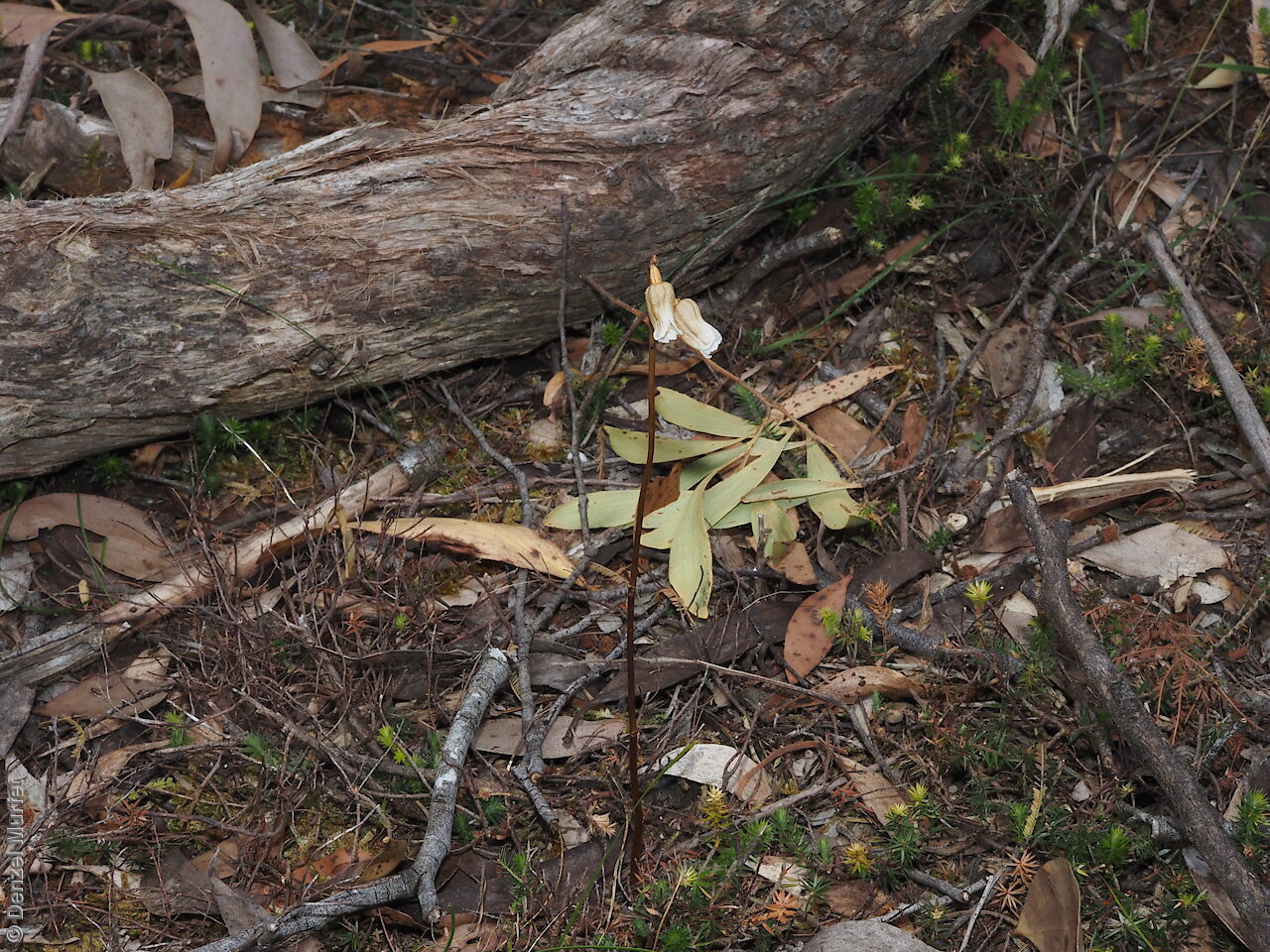
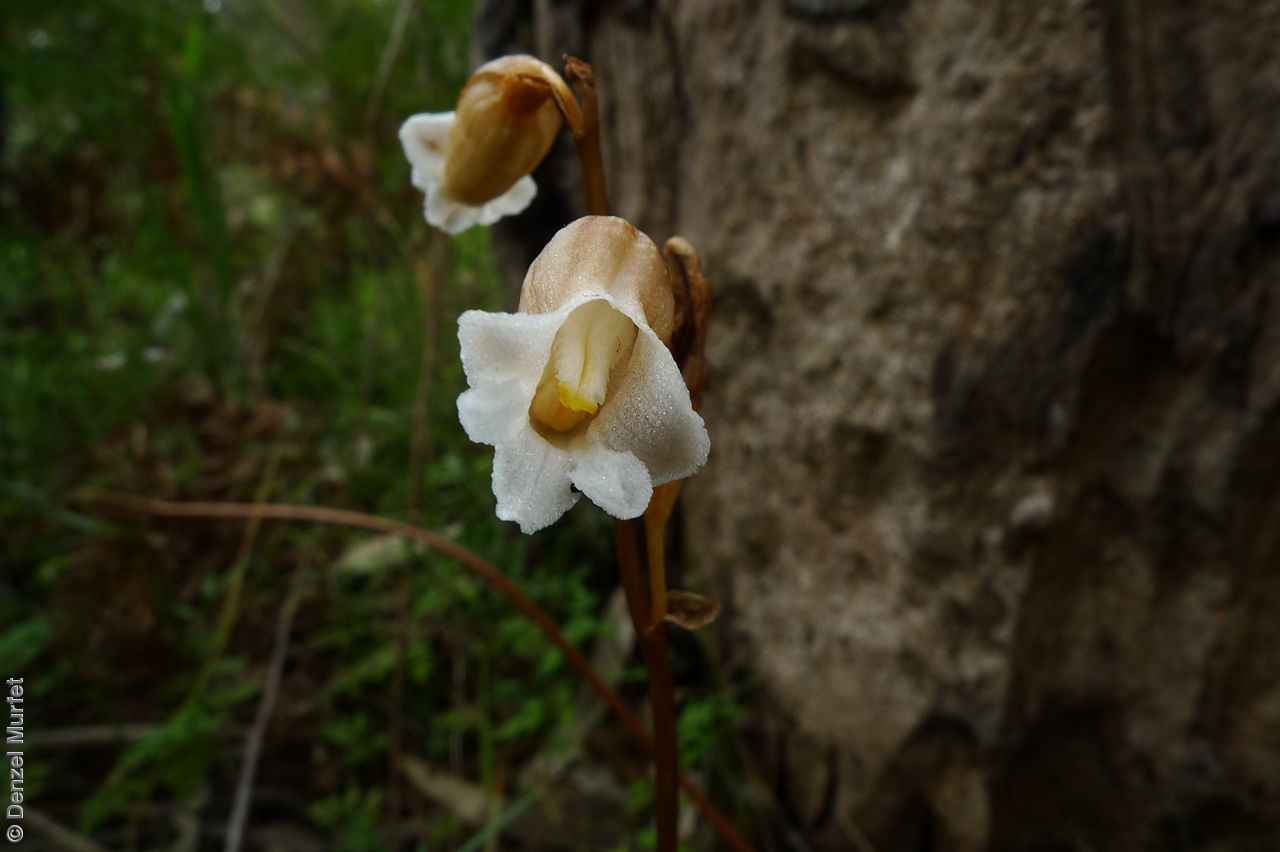
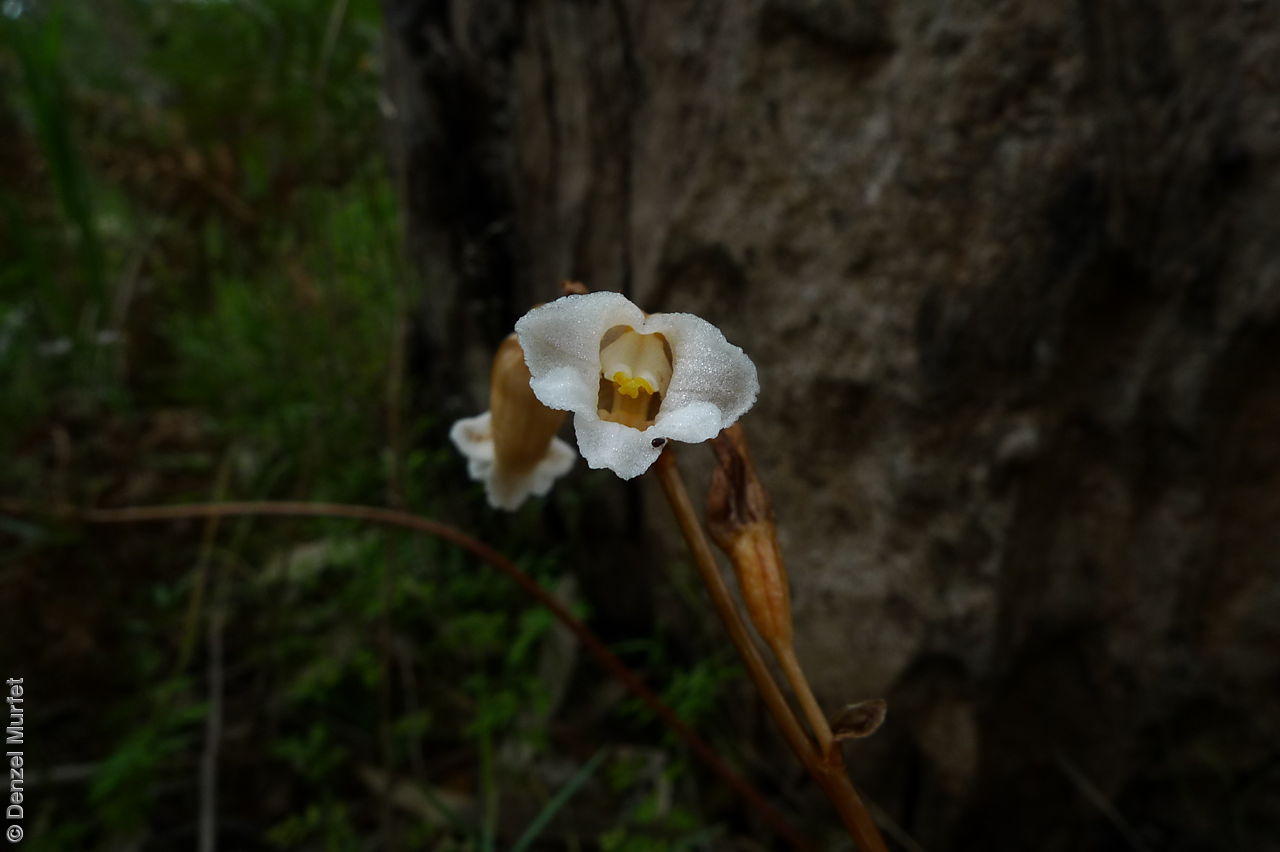
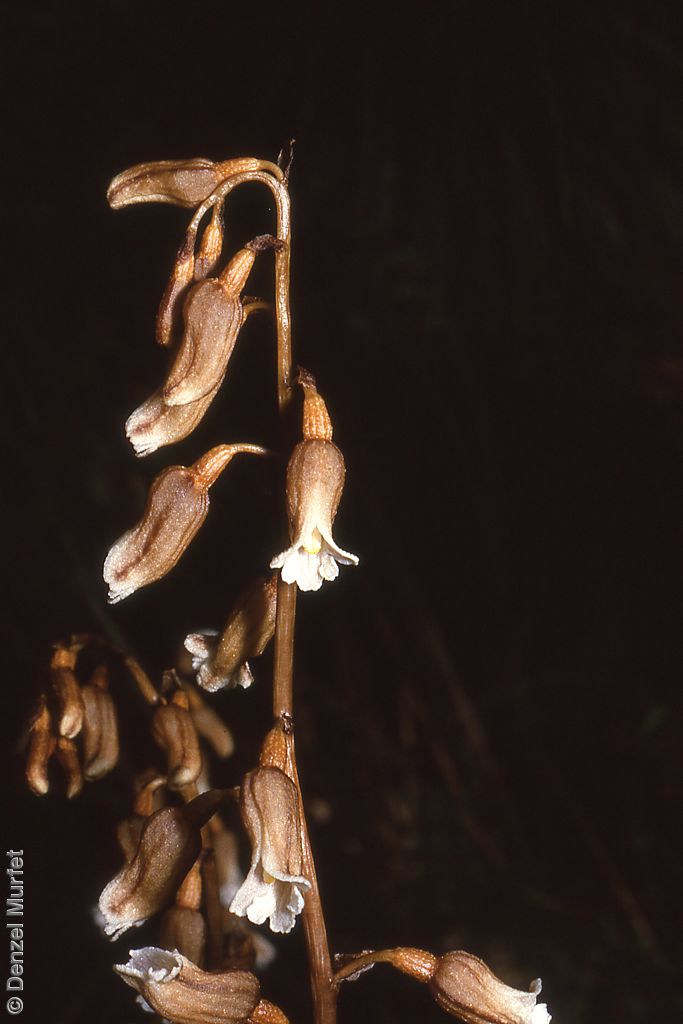
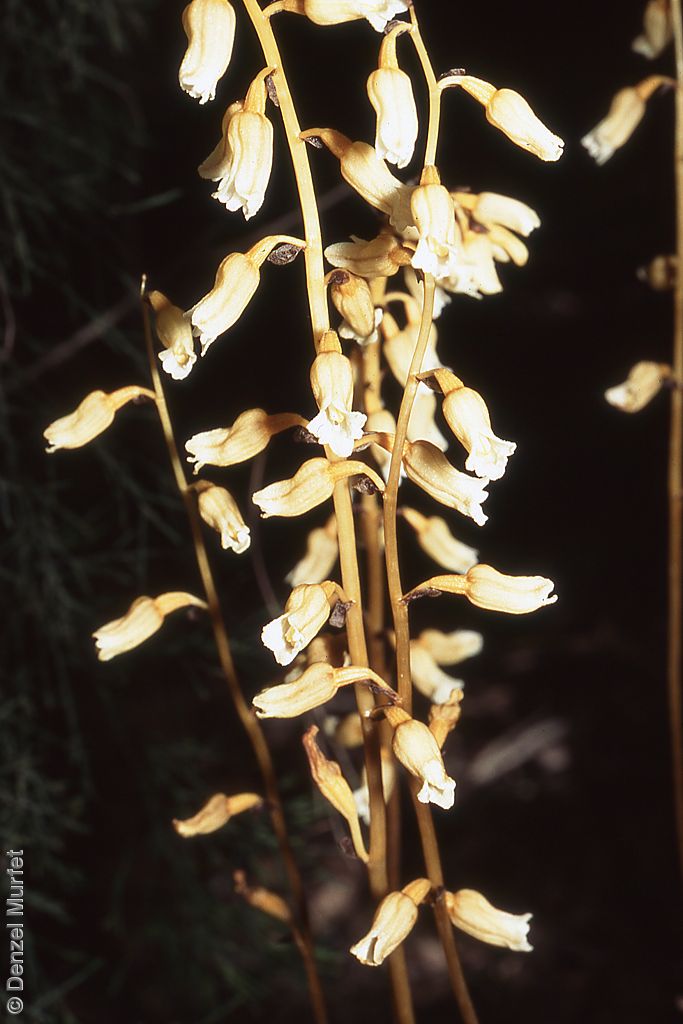
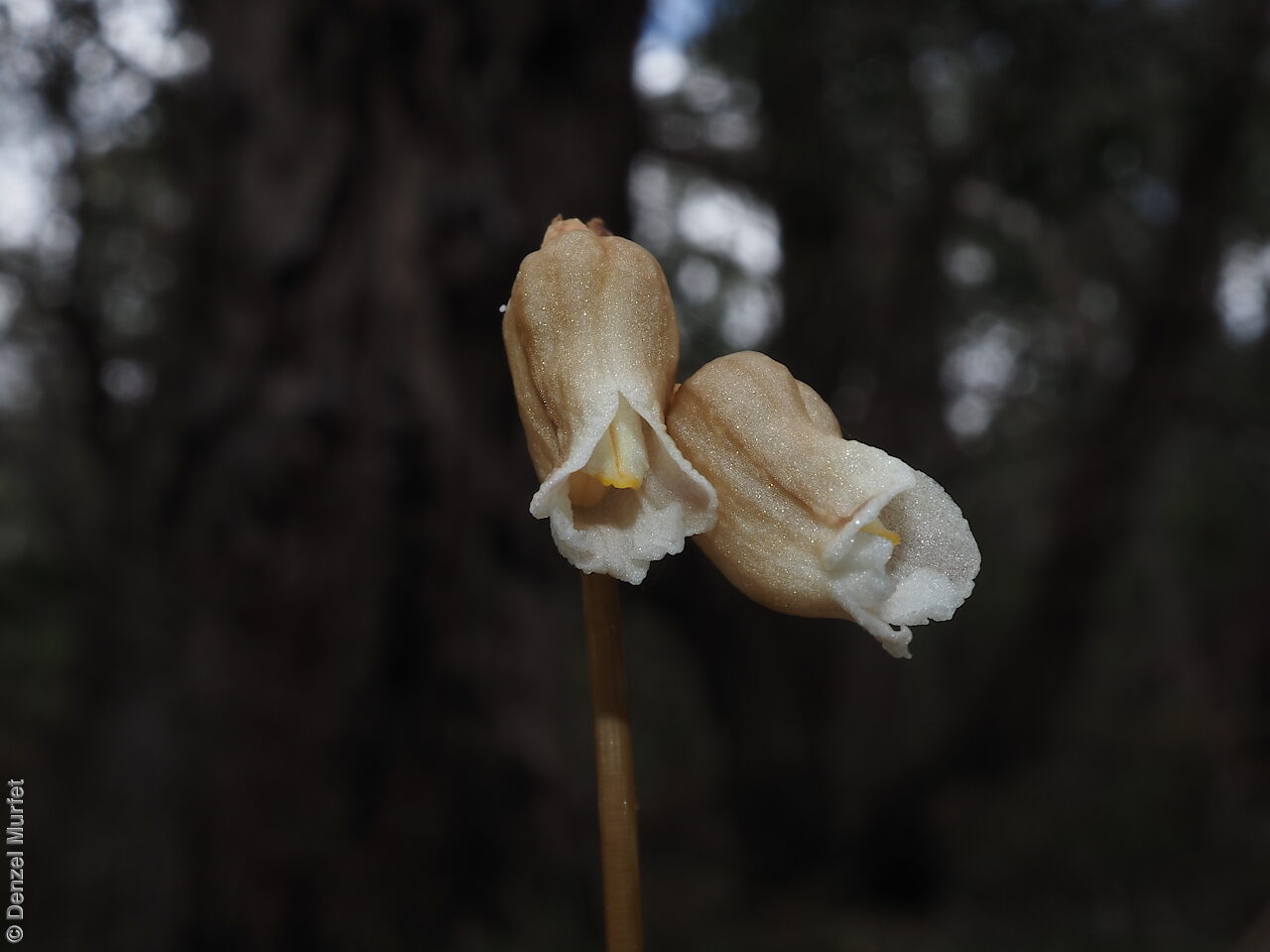
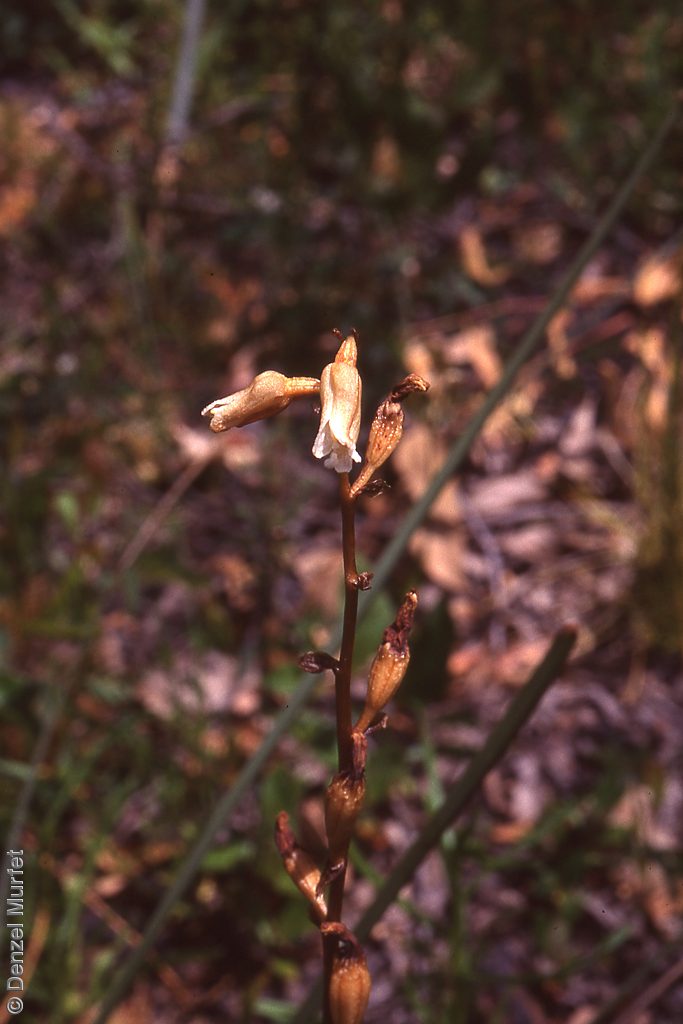
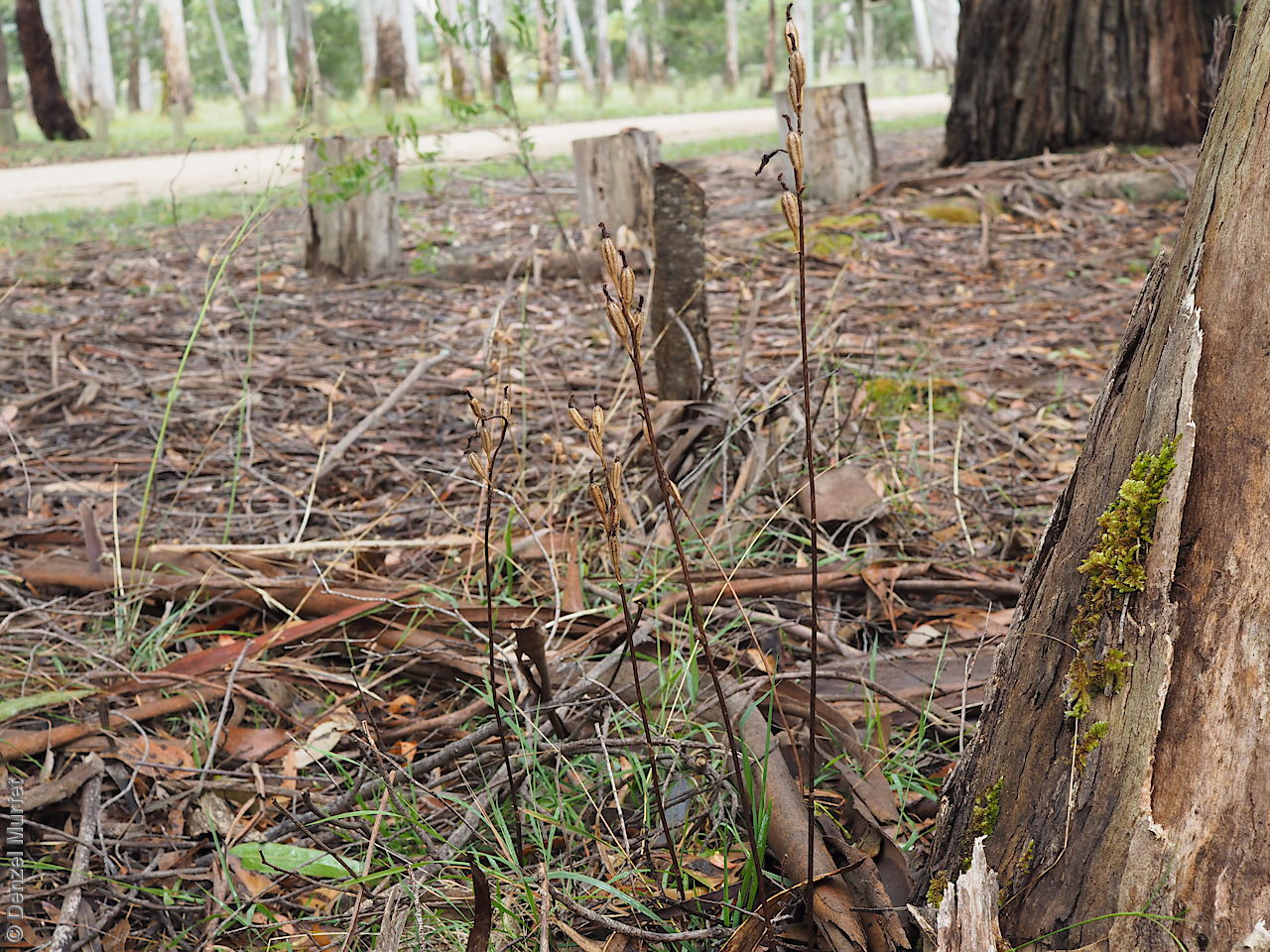
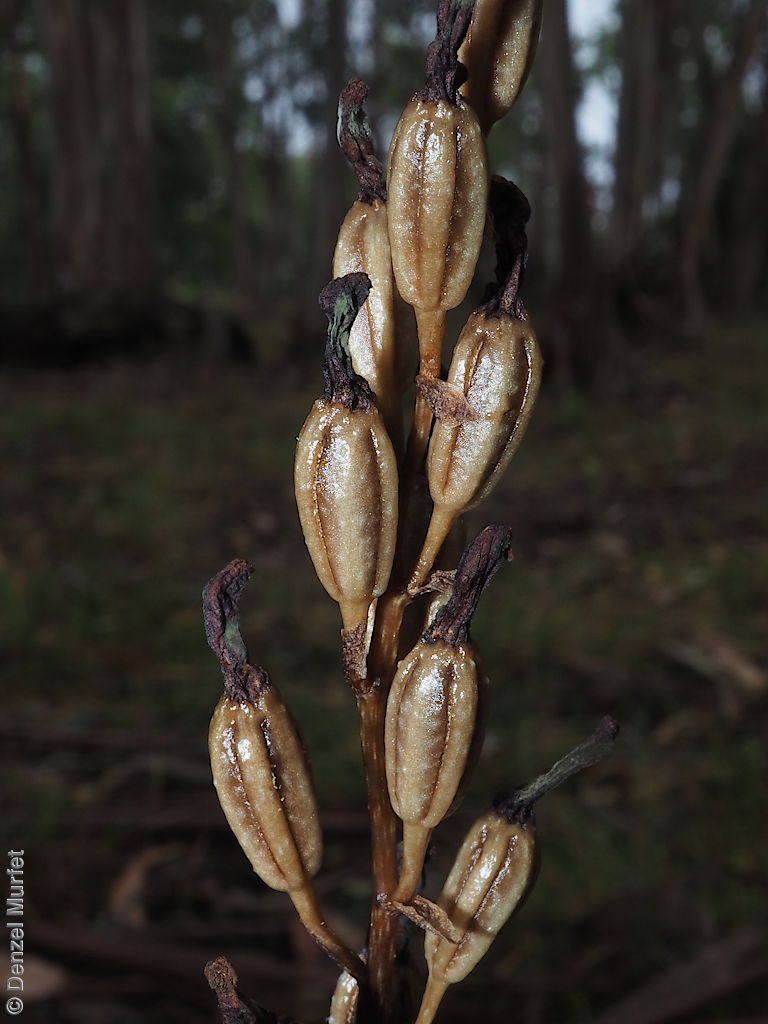
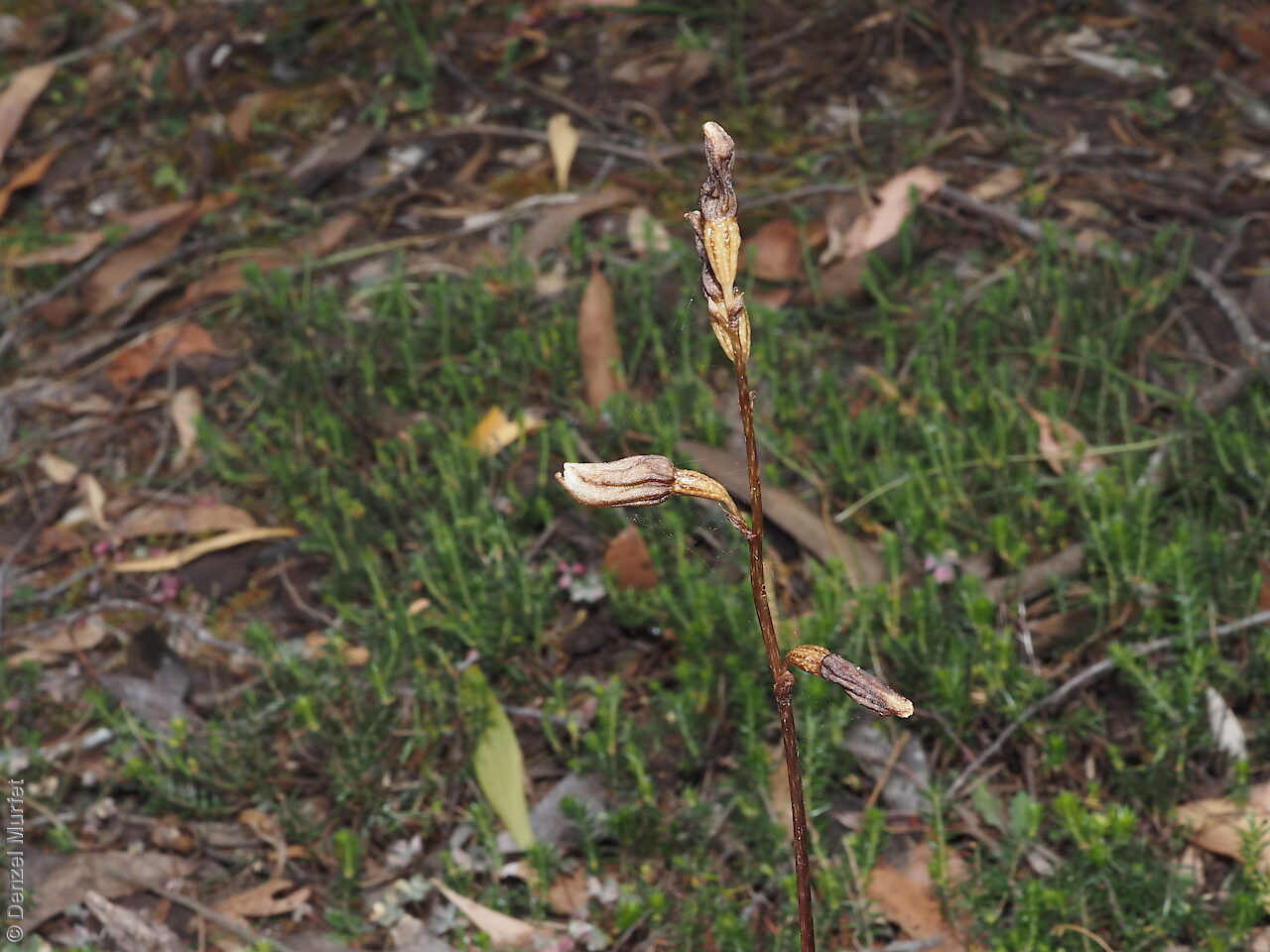
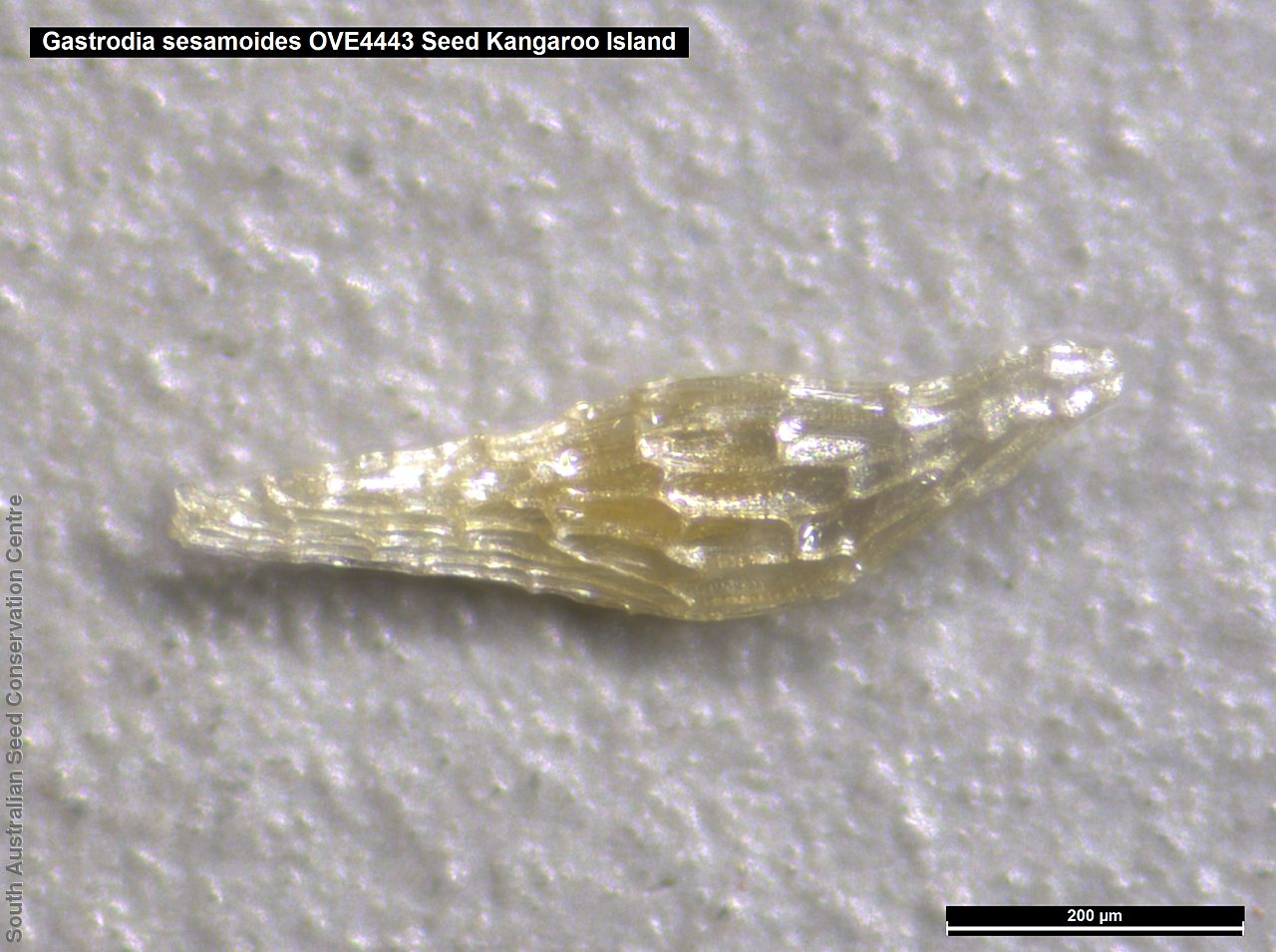
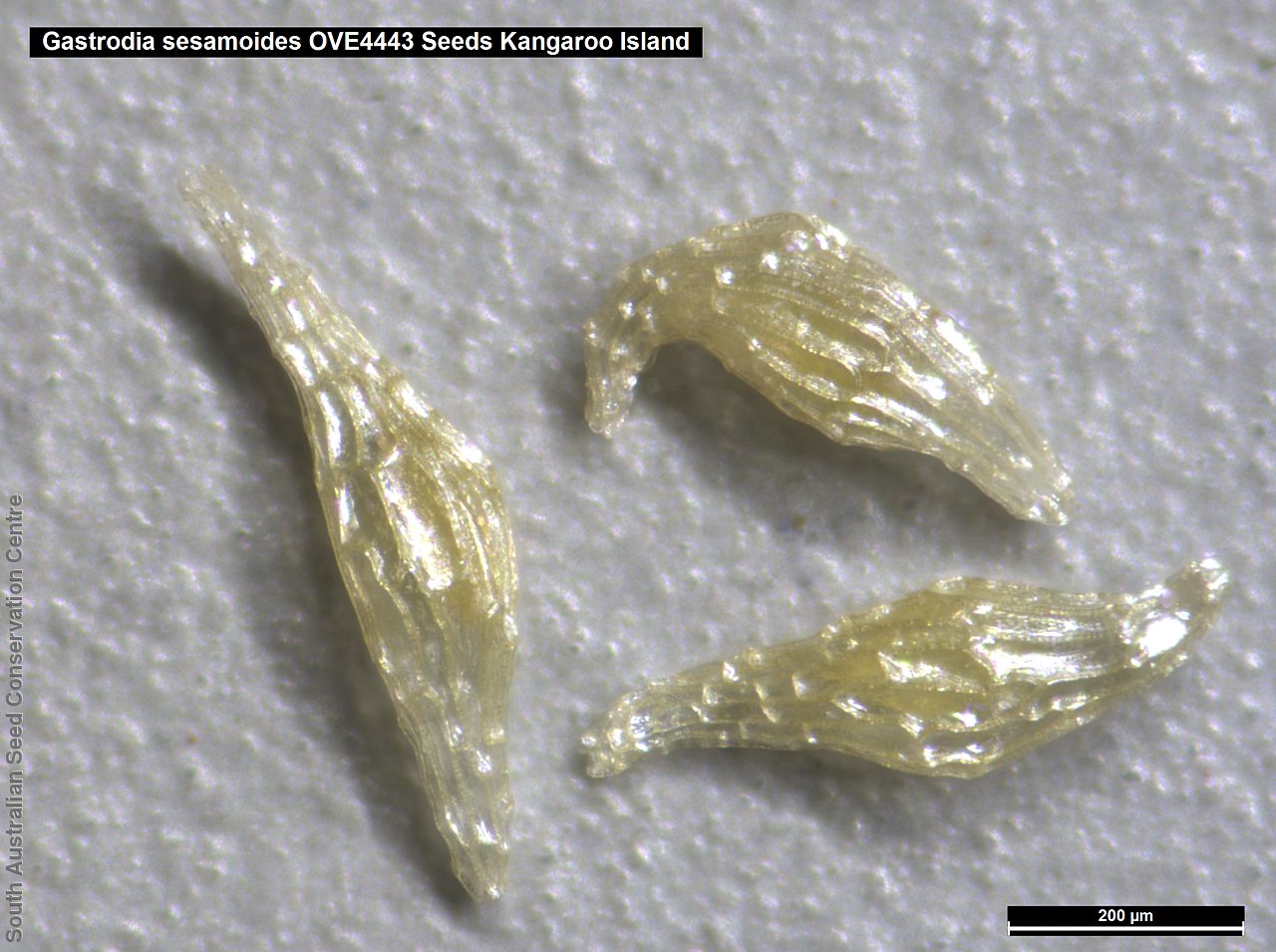

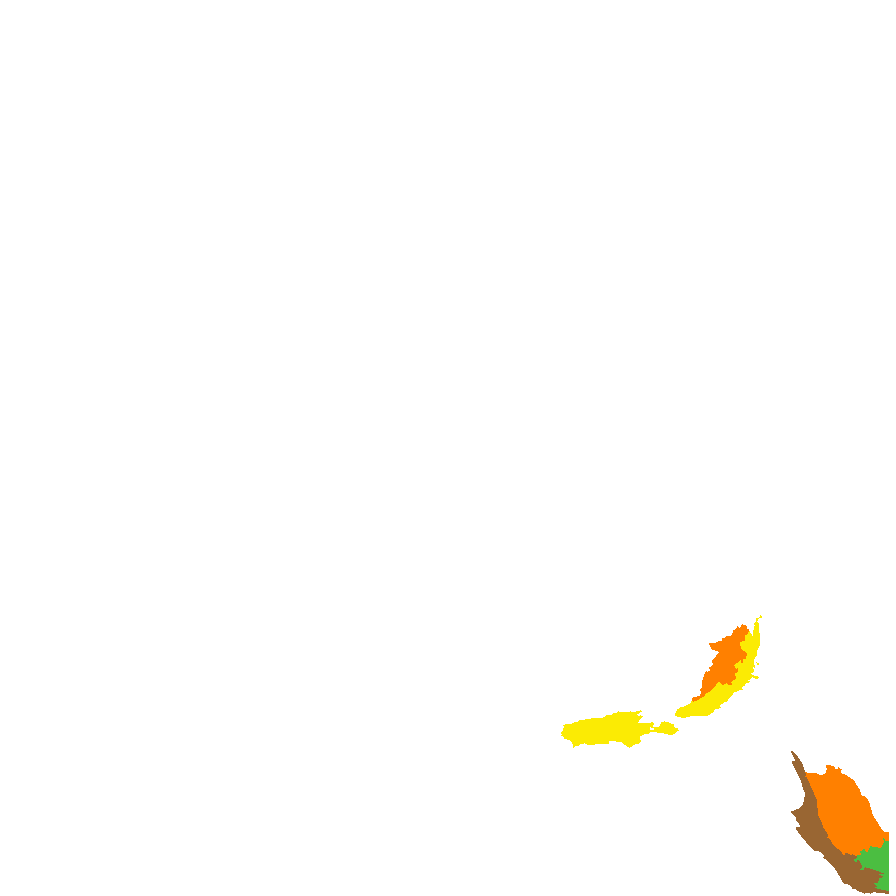
Botanical art
Common names
Cinnamon Bells
Potato Orchid
Etymology
Gastrodia from the Greek 'gastrodes' meaning pot-bellied, referring to the swollen, sometimes bulbous flower. Sesamoides means sesame like, referring to the tubular corolla, which is gibbous at the base as in the flowers of Sesamum indicum - the sesame.
Distribution and status
Found in the southern Mount Lofty Ranges, Kangaroo Island and the lower South-east in South Australia, growing in areas of high rainfall in wet sclerophyll forests, dry sclerophyll forests, woodlands and riparian areas. Also found in Queensland, New South Wales, Victoria and Tasmania. Native. Rare in South Australia. Common in the other states.
Herbarium regions: Southern Lofty, Kangaroo Island, South Eastern
NRM regions: Adelaide and Mount Lofty Ranges, Kangaroo Island, South East
AVH map: SA distribution map (external link)
Plant description
Annual terrestrial orchid growing to 50 cm tall with up to 20 small flowers. These epiparasitic herb are leafless but have scale like bracts along the brown stem. Flowering stems apex drooping in bud and straightening at anthesis, dark brown. Flowers are bell-shaped, erect at first then drooping, cinnamon-brown with white tips, fragrant, exterior surface often very rough. Flowering between October and January. This species differs from Gastrodia procera by having a more slender habit, less crowded flowers and a strongly deflexed stem tip. Fruits are brown papery ellipsoid capsule. Seeds are very small yellow ovoid seed with a translucent clear mesh-like covering.
Seed collection and propagation
Collect seeds between December and February. Collect fat capsules as they start to dry and turn brown. Pods will split and release the seeds quickly and will require monitoring. To increase the chances of collecting mature pods, it is recommended that a small breathable bag (ie. Organza bags) be used to enclose the developing capsules. Place the capsules in a container that will hold fine seeds and leave to dry for a few weeks or until the capsule split. Then carefully hold the capsule and tap it gently to release the seeds. Store the seeds with a desiccant such as dried silica beads or dry rice, in an air tight container in a cool and dry place, refrigerator or in liquid nitrogen. For the NVC South East Orchid Project four populations consisting of more than 20 individuals in total were recorded from Kuitpo, Kangaroo Island and Yundi. Approximately 5060,000 seeds (1.18 g) were banked from this population. Seed viability from four collections made ranged from 50% to 78%. More research is needed to understand the germination requirements for Gastrodia species.
| Location | No. of seeds (weight grams) | Number of plants | Date collected | Collection number Collection location | Date stored | % Viability | Storage temperature |
|---|---|---|---|---|---|---|---|
| BGA | 2,340,000 (0.546 g) | 10+ | 14-Dec-2011 | K. Brewer Southern Lofty | 1-Nov-2016 | 85% | -80°C |
| BGA | 2,350,000 (0.55 g) | 166 pods | 12-Jan-2011 | J. Quarmby Southern Lofty | 1-Nov-2016 | 92% | -80°C |
| BGA | 140,000 (0.032 g) | 9-Dec-2012 | OVE3222 Kangaroo Island | 1-Nov-2016 | 90% | -80°C | |
| BGA | 230,000 (0.054 g) | 47 pods | 12-Jan-2011 | J. Quarmby Southern Lofty | 1-Nov-2016 | 80% | -80°C |
| BGA | 2,613,000 (0.61 g) | K. Brewer Southern Lofty | 1-Nov-2017 | N/C | -18°C, -80°C | ||
| BGA | 685,000 (0.16 g) | 3-Jan-2017 | OVE4443 Kangaroo Island | 1-Nov-2017 | N/C | -80°C | |
| BGA | 38,000 (0.009 g) | 23-Nov-2015 | B.Overton Kangaroo Island | 1-Nov-2017 | N/C | -80°C | |
| BGA | 514,100 (0.12 g) | 20+ | 21-Dec-2017 | KHB988 Southern Lofty | 30-Jun-2018 | N/C | -18°C |
| BGA | 5,000,000 (1.18 g) | 23 | 17-Dec-2018 | DJD3847 Southern Lofty | 24-Apr-2019 | N/C | -18°C, -80°C |
Number of plants: This is the number of plants from which the seeds were collected.
Collection location: The Herbarium of South Australia's region name.
% Viability: Percentage of filled healthy seeds determined by a cut test or x-ray.